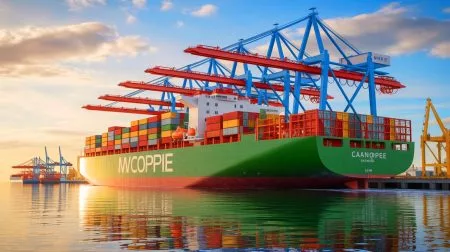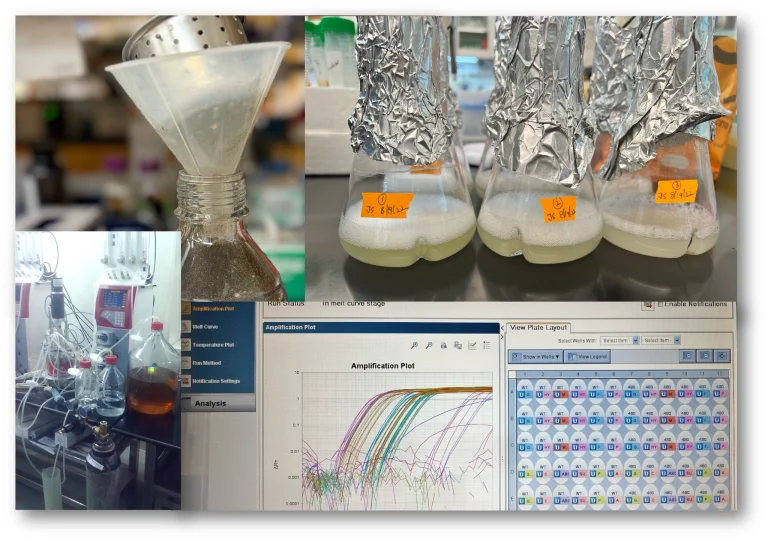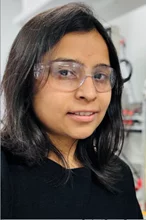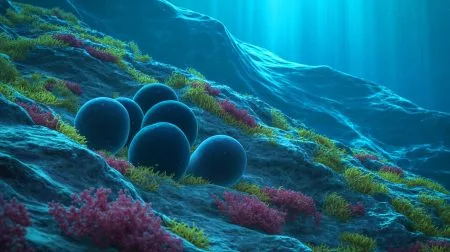Interest for Wildlife Research
Jaya Anand Singh’s scientific journey began in the wilds of Madhya Pradesh, India. As a master student, she spent three intense months inside the Pench Tiger Reserve, collecting carnivore fecal samples as part of ‘Tigerproject’ to estimate tiger populations using non-invasive techniques. This was followed by tiger species identification in the laboratory setting.
The thrill of navigating predator territory so closely to natural tiger kill zones left a lasting impact, grounding her scientific curiosity in both adventure and responsibility.
Engineering Resilience: Adaptive Laboratory Evolution
Singh’s doctoral research at Jawaharlal Nehru University took her far from the forest and deep into the world of Biotechnology. Her focus was on enhancing the tolerance of a gram-positive microbe Lactococcus lactis to advanced biofuels—specifically Isobutanol.
Through adaptive laboratory evolution and systems biology approaches, she evolved and characterized strains with significantly improved tolerance, increasing their viability to engineer for Isobutanol production.
Her success in linking gene mutations and transcriptional reprogramming to phenotypic traits marked a turning point, not just in the project but in her ability to translate complexity into real-world applications.
Bioengineering for Valuable Chemicals
Her postdoctoral work at IIT Delhi saw a pivot toward biopharma, where Singh investigated the metabolic stress caused during recombinant therapeutics production in E. coli. Using transcriptomics and targeted gene co-expression, she along with her team improved recombinant protein yields and identified strategies to reduce cellular stress.
This work not only honed her molecular and systems biology toolkit but also introduced her to industrial style thinking within an academic setup—an environment where Singh thrived.
Singh’s second postdoctoral experience at the University of Delaware offered the opportunity to develop genetic toolkits for non-model microbial systems. One of her most notable achievements involved enabling waste to value transformation using engineered microbial strains.
She developed an easy and quick to implement genome manipulation method and successfully demonstrated the potential to convert oxidised plastic waste into commercially valuable compounds. It was a practical demonstration of circular economy principles, powered by synthetic biology.
Biosensing in Fungal highways
Now at Worcester Polytechnic Institute, Dr Singh is investigating how molecules travel through fungal networks in soil called “fungal highways.” Her work is at the forefront of developing interkingdom soil sensors capable of detecting contaminants underground, facilitated by fungal highways. In parallel, she’s exploring how to enhance the transformation ability of thermotolerant microbial strain, a step critical to pathway engineering of this thermotolerant microbial host for production of valuable chemicals.
With her extensive experience in molecular biology, bioengineering, and data-driven problem-solving, Singh’s long-term goal is to contribute to industries focused on sustainable bioproducts. Whether it’s recombinant proteins, biofuels, or high-value metabolites, her passion lies in addressing complex challenges that sit at the interface of biology and industry.
Jaya Anand Singh thrives both independently and in collaboration, always seeking to identify and solve problems before they escalate in the future. To her mind, science is not just a profession but an evolving journey of learning, teamwork, and curiosity. Her blend of hands-on fieldwork, cutting-edge lab research, and interdisciplinary thinking makes her a promising force of sustainable biotechnology.
Did you like it? 4.5/5 (24)








Incredible journey, Jaya! How do you manage to balance fieldwork with lab research? 🤔
Wow, tiger reserves and bioengineering? That’s a unique combination!
I’m truly inspired by your work on fungal highways. How do you see this impacting soil conservation efforts globally?
Not sure I fully understand the concept of ‘fungal highways’. Could you explain it in simpler terms?
This sounds like a science fiction movie! 🧬🌍 Keep up the amazing work.
As an environmentalist, I appreciate your dedication to sustainable solutions. Thank you, Jaya! 🙏
Interesting read, but what exactly are “thermotolerant microbial strains”?
Jaya, what’s the biggest challenge you’ve faced in your research so far? 💪